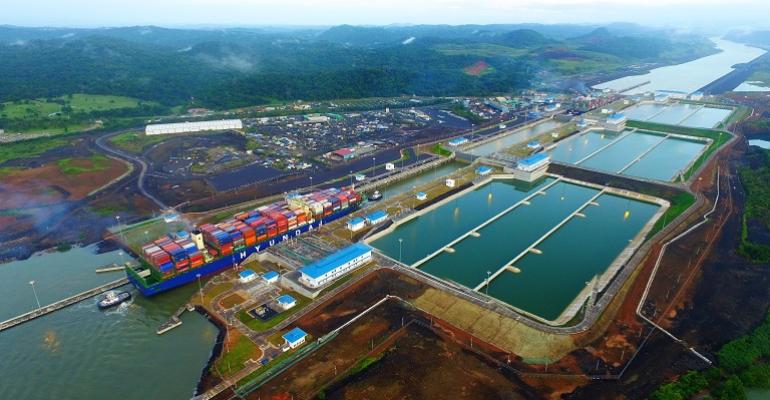The drought challenges facing the canal will deepen as the El Nino effect in the first six months of next year lowers the water levels and extends waiting times driving up costs, the market analyst said.
Extended queues of ships at either end of the Panama Canal have been caused this year by the reduction in water levels, with the older locks particularly badly hit, causing the Panama Canal Authority to restrict the number of booked transits to 32 vessels per day and 10 neo-panamaxes.
Restrictions on ships have seen an increase in the waiting times for large containerships, “rising sharply to 16-17 days, that is longer than it takes to transit the Pacific” noted Peter Sand.
These challenges are expected to be over-shadowed by the mixed effects of El Nino and climate change that will see a “dryer than normal first half of 2024,” explained Sand. That impact will be stronger and more prolonged than this year’s effects according to Sand.
Currently, Sand said demand for capacity is starting to increase with the consequence that longer waiting times are already being experienced, that will lead to increased rates and carrier surcharges with shippers looking for alternative routes, via the Suez Canal.
“That may already be happening [re-routing of cargo] but we’re not seeing it in the volume data yet,” said Sand.
He said that currently the split for freight heading for the US East Coast out of Asia is two thirds transits the Panama Canal and one third is routed via the Suez Canal. That is expected to change as the effects of the low water levels impact supply chains with costs and delays forcing shippers to find solutions.
Some companies are already seeing opportunities to reroute cargo overland to US East Coast destinations and last week Seatrade Maritime News reported on CPKC offering a rail service from Lazaro Cardenas port in Mexico through to US Midwest and Gulf markets, and beyond, as an alternative to transiting the Panama Canal.
Copyright © 2024. All rights reserved. Seatrade, a trading name of Informa Markets (UK) Limited.
Add Seatrade Maritime News to your Google News feed.  |

